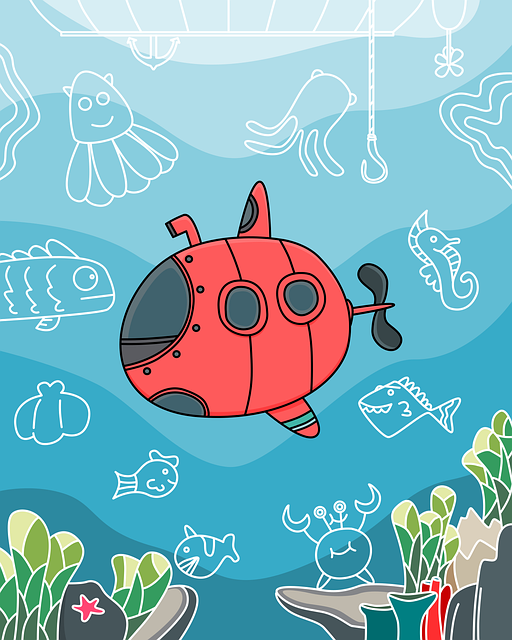Designing a sustainable home aquarium combines eco-friendliness and aesthetics. Using recycled materials, energy-efficient tanks, and natural decor enhances both the environment and appearance. Eco-conscious lighting options like solar power and smart LED controls reduce energy consumption. Effective waste management through plants and regular water changes maintains a healthy ecosystem. Integrating these principles creates an attractive, responsible home aquarium design.
Creating an eco-friendly aquarium isn’t just about aesthetics; it’s a sustainable approach to fishkeeping that minimizes environmental impact. This guide explores the key components of a green home aquarium design, from selecting eco-conscious fish tanks to implementing natural decor and renewable lighting solutions. Learn how to manage organic waste effectively, fostering a biologically balanced ecosystem within your very own aquatic sanctuary.
Sustainable Tank Selection: Choosing Eco-conscious Fish Tanks
When setting up a home aquarium design, sustainable tank selection is a crucial step for eco-conscious fishkeepers. Opting for aquariums made from recycled or biodegradable materials reduces plastic waste and minimizes environmental impact. Glass tanks are traditional choices, but some manufacturers now offer alternative options like bamboo or wood frameworks, which not only look unique but also absorb excess CO2. These eco-friendly designs blend seamlessly with modern home aesthetics while promoting a greener lifestyle.
Additionally, sustainable tank selection extends beyond materials; it includes considering energy efficiency. Some advanced aquariums come with built-in heating and filtration systems that are designed for optimal energy conservation. By choosing tanks with energy-saving features, fishkeepers can contribute to reducing their carbon footprint without compromising on the health of their aquatic ecosystem.
Natural Decor: Crafting Aquatic Ecosystems with Live Plants
Creating a natural decor for your home aquarium design isn’t just aesthetically pleasing; it also fosters a healthier environment for your fish. Live plants serve as a crucial element in this eco-friendly approach, mimicking the natural habitats of many aquatic species. These plants not only provide hiding spots and territorial boundaries but also contribute to water quality by absorbing excess nutrients and producing oxygen through photosynthesis.
When designing with live plants, consider species that thrive in your fish’s preferred water conditions, ensuring a harmonious balance. Some popular choices include anubias, java moss, and aquatic ferns. Strategically placing these plants around the aquarium can create intricate underwater landscapes, enhancing both functionality and visual appeal, making your eco-friendly home aquarium design a true work of art.
Renewable Lighting Solutions: Illuminating Your Aquarium Greenly
Aquarium lighting is a critical component of any home aquarium design, but it doesn’t have to come at an environmental cost. Traditional fluorescent and LED lights often consume significant energy, contributing to a larger carbon footprint. However, eco-conscious fishkeepers now have access to renewable lighting solutions that offer both style and sustainability.
One innovative option is the use of solar-powered lights or those equipped with energy-efficient LEDs. These technologies not only reduce electricity usage but also mimic natural daylight patterns, promoting the well-being of aquatic life. Additionally, smart aquarium lighting systems allow for precise control over intensity and duration, further optimizing energy conservation without compromising on the beauty of your underwater world in a home aquarium design.
Organic Waste Management: Keeping Your Aquarium Biologically Balanced
Maintaining a biologically balanced ecosystem within your home aquarium design is key to eco-friendly fishkeeping. Organic waste management plays a crucial role in this balance, as it ensures that harmful substances don’t accumulate and disrupt the delicate aquatic environment. Natural processes, such as plants absorbing nutrients and beneficial bacteria breaking down organic matter, should be encouraged.
Regular water changes are essential for this process, allowing for the removal of built-up waste products. Additionally, incorporating live plants into your aquarium design provides hiding spots for fish while also aiding in nutrient absorption. A thriving ecosystem, supported by proper waste management, promotes healthier fish and a more sustainable home aquarium environment.
Creating an eco-friendly home aquarium design is not only aesthetically pleasing but also promotes a sustainable lifestyle. By selecting conscious fish tanks, incorporating live plants for natural decor, adopting renewable lighting solutions, and implementing organic waste management practices, fishkeepers can enjoy vibrant aquatic ecosystems while minimizing their environmental impact. Embrace these sustainable practices to contribute to the well-being of our planet and its precious marine life.
